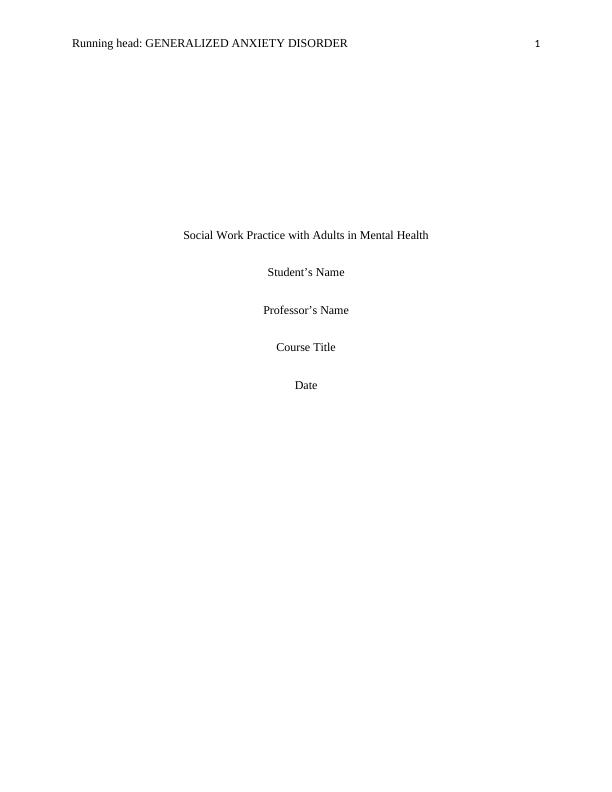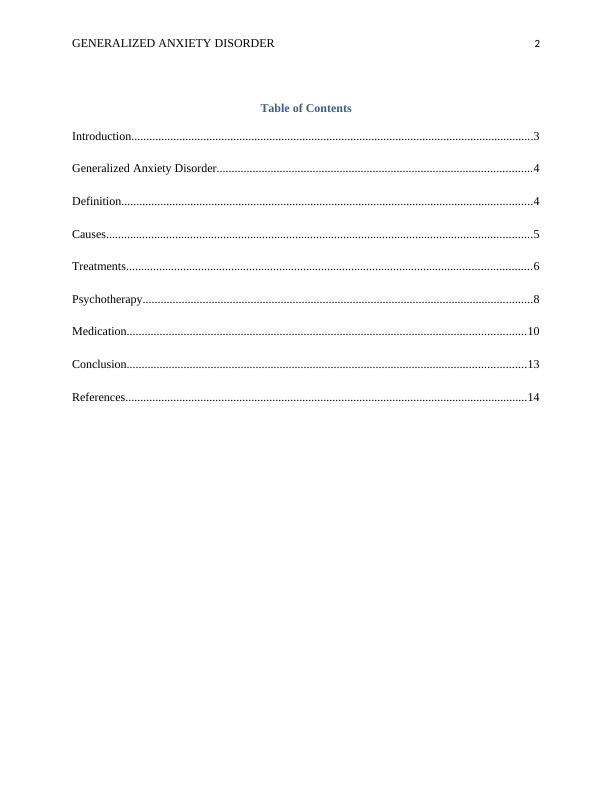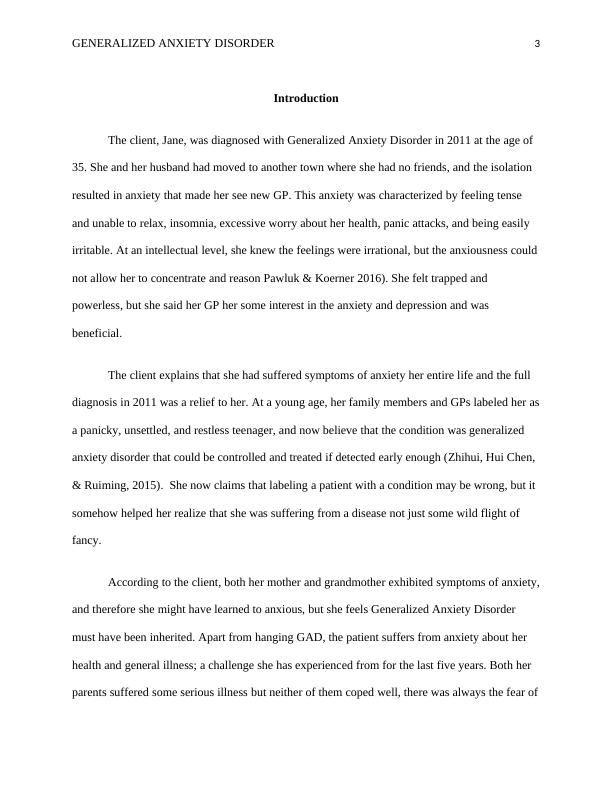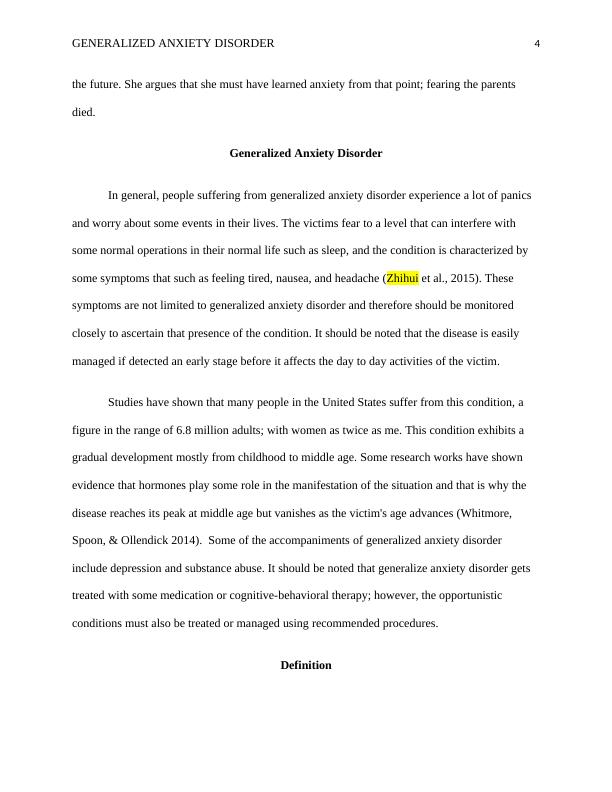Generalized Anxiety Disorder: Definition, Causes, and Treatments
18 Pages4606 Words148 Views
Added on 2021-11-05
About This Document
This article discusses Generalized Anxiety Disorder, its definition, causes, and treatments. It is a part of Social Work Practice with Adults in Mental Health course and includes a case study of a patient diagnosed with GAD.
Generalized Anxiety Disorder: Definition, Causes, and Treatments
Added on 2021-11-05
ShareRelated Documents
End of preview
Want to access all the pages? Upload your documents or become a member.
Social Work Practice with Adults in Mental Health: Generalized Anxiety Disorder
|18
|4680
|74
Nursing care of the patient with anxiety disorder
|8
|2306
|158
Understanding Anxiety, Depression, and Eating Disorders: Causes, Symptoms, and Treatment
|31
|6226
|50
Psychological Disorders: Symptoms, Causes, and Treatment
|6
|1213
|425
Causes of Anxiety - Understanding the Factors that Contribute to Anxiety Disorders
|8
|1968
|220
Physiological Symptoms of Panic Attacks and their Consequences
|2
|684
|324




